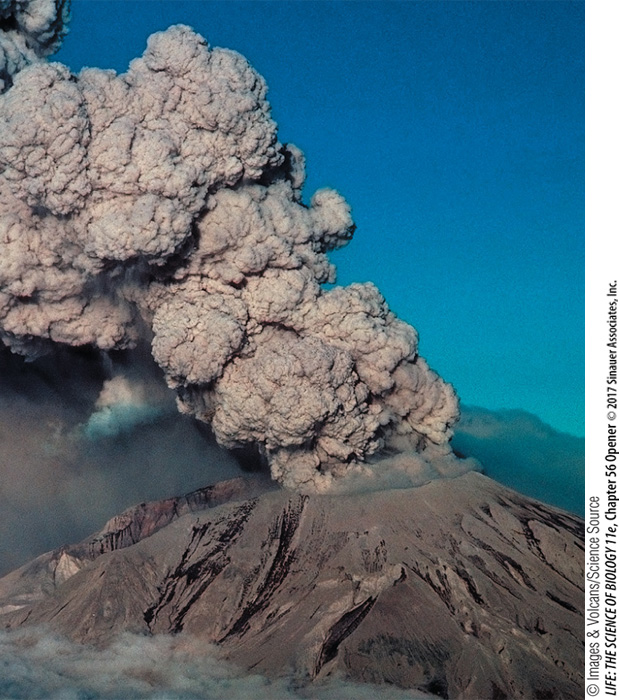investigating life
When Mount St. Helens in Washington State erupted at 8:30 A.M. on May 18, 1980, almost all living things for miles around were obliterated in an instant. A huge magma-filled bulge that had been forming for months exploded, creating the largest avalanche in recorded history. Mud and rock flowed down Mount St. Helens and were deposited on alpine meadows, lush forests, and crystal-clear lakes and ponds, tens of meters deep in some areas. The bulk of the avalanche traveled to the North Fork Toutle River, where it scoured the entire valley, from floor to rim, with volcanic material. A huge pile of vegetation was deposited downstream. The blast also produced a cloud of hot air that burned forests to ash near the mountain, blew down trees over a large area, and left dead but standing trees for miles.
Volcanic eruptions are so rare that studying the aftereffects of the Mount St. Helens eruption gave ecologists an unprecedented view into how ecological communities respond to extreme natural catastrophes and the recovery processes they undergo. The event created brand-new environmental conditions to which colonizing species had to respond. At one extreme was the Pumice Plain, a large, gently sloping area close to the lava dome that had once been covered in alpine meadows and forests. Pelted with hot, sterilizing pumice (a light and porous volcanic rock), it was now a harsh moonscape-like environment that lacked life and organic matter of any form. In the aptly named Blowdown Zone, covering most of the mountain’s slopes, the destruction was less catastrophic. Here there was hope of a biological legacy buried beneath the piles of downed trees and vegetation covered in mud and ash. Beyond the Blowdown Zone, forests were covered in debris and ash that spewed from the mountain for months.
Shortly after the eruption, helicopters delivered the first scientists to the mountain. A few fortunate ecologists collected baseline data on the sequence of biological changes that began soon after the eruption. Now, more than 35 years later, hundreds of ecologists have studied the reemergence of life on Mount St. Helens. Much of what has been learned has been unexpected and has changed the way we view the resiliency and recovery of communities after catastrophic events.
How have ecological communities on Mount St. Helens responded to the eruption, and what processes have been important to their recovery?
